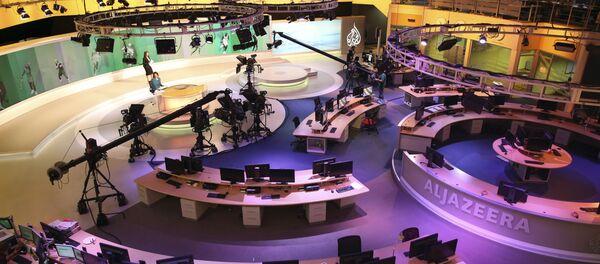Several Gulf states have imposed a de facto transport blockade against Qatar and there have been concerns Qatar, which depends heavily on food imports, may end up facing a severe food shortage.
Qatar's national football team could face disciplinary action from FIFA after its players warmed up for a World Cup 2018 qualification match against South Korea wearing T-shirts showing support for the country's Emir.

If the diplomatic crisis continues it might make it difficult for the World Cup stadiums to be completed.
The crisis has echoes of the fiasco in Colombia more than 30 years ago.
The World Cup traditionally alternated between Europe and Latin America and in 1974 the honor of hosting the 1986 tournament was given to Colombia, then a fairly impoverished but football-mad country.
Crisis has no impact on World Cup work: SC || https://t.co/algpCtePRv pic.twitter.com/DJCNPhUvjJ
— Qatar Tribune (@Qatar_Tribune) 16 June 2017
By October 1982 it became clear the Colombian government simply could not afford to build all the stadiums which were required and FIFA decided to pull the plug and switch it to Mexico, which had successfully hosted in 1970 and needed to do little work to bring its stadiums up to scratch.
This time round the problem is not a lack of money. Qatar, with large oil and gas reserves, is one of the wealthiest nations in the world and its finance minister, Ali al-Emadi, said recently it was spending US$500 million a week on infrastructure to prepare for the World Cup.
But there are fears that if the Saudis and their allies keep the pressure up on Qatar it might not be able to host the tournament logistically in 2022.

The decision, by Sepp Blatter and his fellow FIFA luminaries, to hand the 2022 World Cup to Qatar was a major shock when it was announced in 2010, defeating rival bids from the US, South Korea, Japan and Australia.
The chairman of Qatar's bid, Sheikh Mohammed bin Hamad al-Thani, was quoted on FIFA's website, saying: "Thank you for believing in change, for expanding the game and for giving Qatar a chance.
"You will be proud of us and you will be proud of the Middle East. I promise you this."
Its 95 degrees in Qatar right now….. at 230am. How's the World Cup suppose to happen here in 5yrs? pic.twitter.com/j8tMjCeLnj
— The Colorful Kit (@TheColorfulKit) 12 June 2017
Qatar was chosen as the 2022 host at the same time as Russia was given the 2018 tournament.
But while Russia is a vast country with a long tradition of playing football and a pleasant summer climate, several critics immediately pointed out Qatar was a tiny nation, with no football history to speak of and temperatures in June of 45 degrees Celsius.
#Qatar launches first 2022 FIFA World Cup stadium https://t.co/ErqxK24Ol4
— Earl Cordell (@EarlCordell_) 7 June 2017
In the face of the criticism, FIFA chief Sepp Blatter made the unprecedented decision of switching the 2022 World Cup from the summer to the winter, with the final to be played a week before Christmas.
Blatter finally resigned from FIFA a few months later amid allegations of corruption and there have been suggestions Qatar may have handed over money to win the bid.
Blatter's successor, Gianni Infantino, refused to reopen the 2022 bidding process, perhaps fearing a multi-billion dollar lawsuit from Qatar.
Ghanim Ali al Kuwari, the executive director of Qatar's Supreme Committee for Delivery and Legacy, said on Thursday (June 15) the Saudi blockade had had no impact on the progress of work at any of the World Cup venues.
He said the 60,000-seater Al Bayt Stadium was 45 percent complete.
#Qatar2022, Al Bayt Stadium will be the second largest across Qatar with capacity of 60,000. After the tournament, 32,000 seats will be used pic.twitter.com/PnIDM5cvF3
— Antonio Alicastro (@antoal_92) June 14, 2017
But the Supreme Committee's own website shows only a rudimentary building site, with little work under way, at the Lusail Stadium, which is designed to host the final and will have a capacity of 80,000.
Ironically one of the bidders for the 2026 World Cup is … Colombia.



